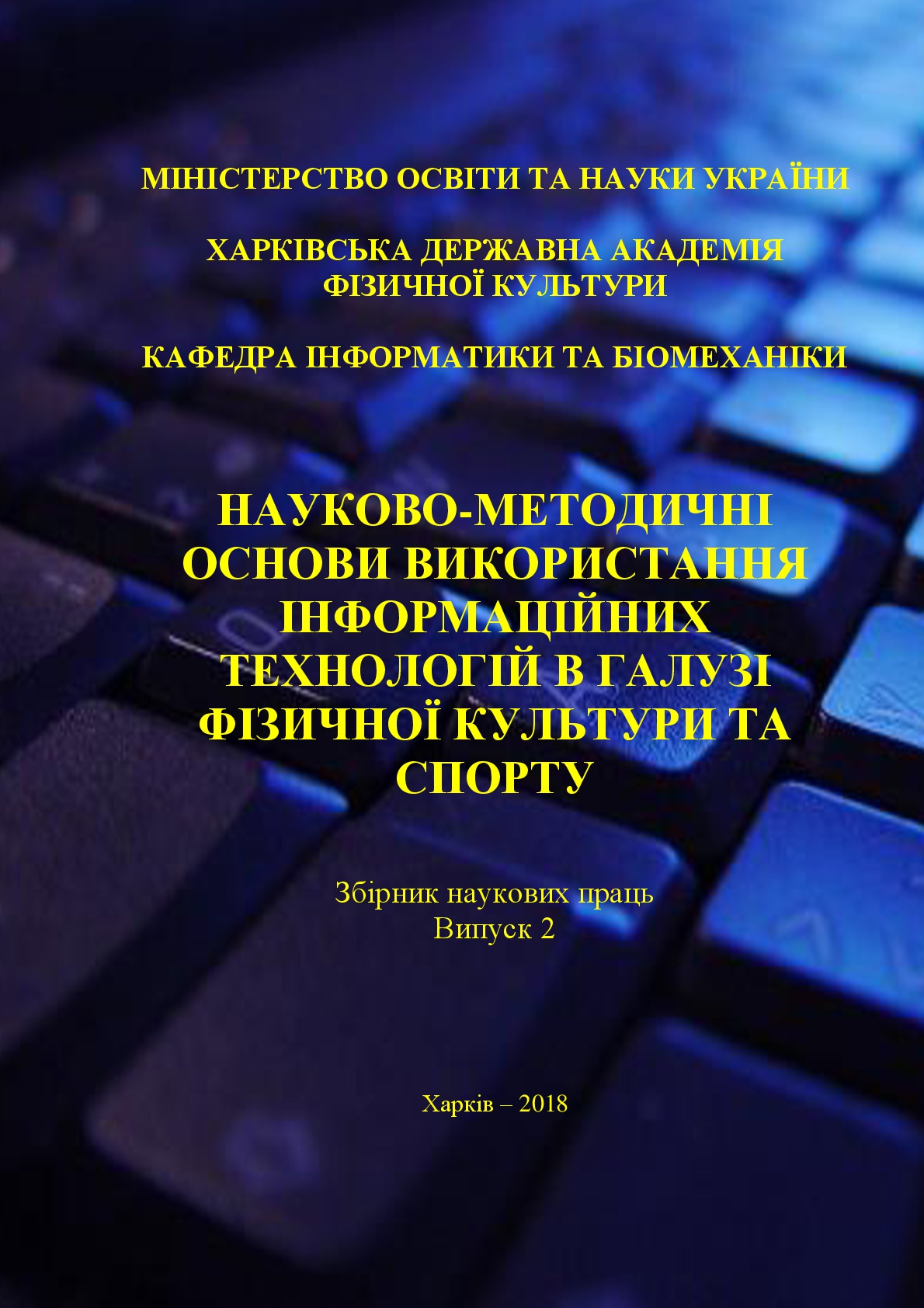ТРИВИМІРНІ ІНФОРМАЦІЙНІ ТЕХНОЛОГІЇ ЯК ЧИННИК ОПТИМІЗАЦІЇ ФІЗКУЛЬТУРНО-СПОРТИВНОЇ РОБОТИ З УЧНІВСЬКОЮ МОЛОДДЮ
Keywords:
3D-технологія, віртуальні 3D-тренажери, доповнена реальність, динамічно керована модель, 3D-візуалізація, растрові технології, фізкультурно-спортивна робота, учнівська молодьAbstract
У статті розглядається доцільність комплексного впровадження інформаційних технологій у процес фізичного виховання учнівської молоді. Доведено, що застосування 3D-технологій, віртуальних тренажерів, доповненої реальності, динамічно керованих моделей, 3D-візуалізації буде сприяти підвищенню зацікавленості в заняттях фізичною культурою і спортом.References
Качан, О.А., Пристинський, В.М. (2017). «Інформаційно-комунікаційні технології фізкультурно-спортивної спрямованості в соціалізації учнівської молоді». Навчально-методичний посібник, 160.
Качан, О.А. (2015). «Використання динамічно керованих моделей і безконтактних сенсорних технологій в процесі фізичного виховання». Фізичне виховання в рідній школі, №3/2015, 18-21.
Ashanin, V., Filenko, L., Pasko, V., Poltoratskaya, A., Tserkovna, O. (2017). «Informatization on the physical culture of students using the «Physical education» computer program». Journal of Physical Education and Sport, 17(3), 1970-1976.
Filenko, L., Ashanin, V., Basenko, O., Petrenko, Y., Poltorarska, G., Tserkovna, O., Kalmykova, Y., Kalmykov, S., Petrenko Y. (2017). «Teaching and learning informatization at the universities of physical culture». Journal of Physical Education and Sport, 17(4), 2454-2461.
Downloads
Published
Issue
Section
License
Authors who publish with this journal agree to the following terms:- Authors retain copyright and grant the journal right of first publication with the work simultaneously licensed under a Creative Commons Attribution License that allows others to share the work with an acknowledgement of the work's authorship and initial publication in this journal.
- Authors are able to enter into separate, additional contractual arrangements for the non-exclusive distribution of the journal's published version of the work (e.g., post it to an institutional repository or publish it in a book), with an acknowledgement of its initial publication in this journal.
- Authors are permitted and encouraged to post their work online (e.g., in institutional repositories or on their website) prior to and during the submission process, as it can lead to productive exchanges, as well as earlier and greater citation of published work (See The Effect of Open Access).

